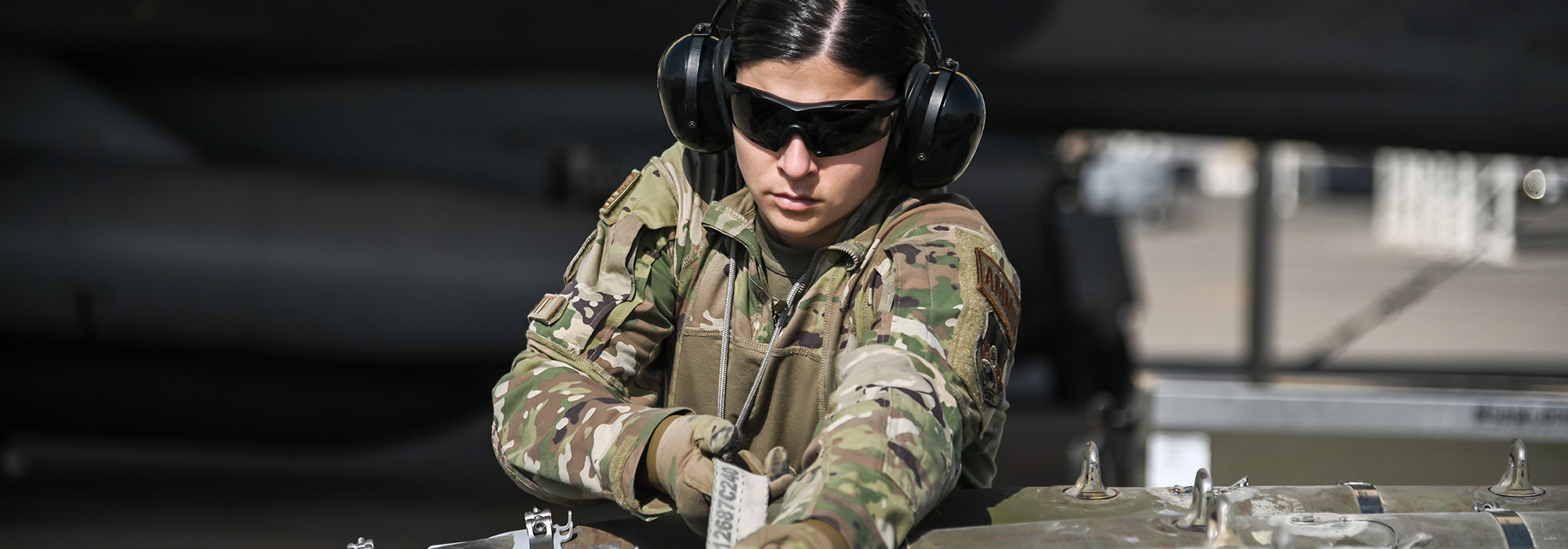The Pentagon released previously withheld statistics Dec. 17 indicating changing demand for air power in Afghanistan as the U.S. prepared to withdraw from that country last spring. U.S. Air Forces Central (AFCENT) withheld the data for the months February 2020 through November 2021 “due to sensitivity surrounding the implementation of the U.S.-Taliban agreement,” said Pentagon Press Secretary John F. Kirby ahead of the data release.
Data for the Iraq and Syria campaign during the same period show steady demand for air power, with 2021 sorties for airlift and airdrops; and intelligence, surveillance, and reconnaissance holding steady, while demand for supplies and passengers increased. Tanker and strike sorties, however, were down from 2020, furthering a downward trend since 2019.
Kirby said Defense Secretary Lloyd J. Austin III directed the release by AFCENT, which provided two slides showing data for 2014 to 2021. Earlier data is available on AFCENT’s website and goes back to 2012.
The new data shows airstrikes in Afghanistan ramped up quickly in the fall of 2020, with the number of weapons released increasing from 56 in September 2020 to 246 in October. Weapons released remained over 100 through April before beginning a steady decline to 18 in July, before the U.S. pullout in August. After expending 153 that month, airstrikes ceased.
Kirby did not interpret the trends, but said the department is committed to providing regular summaries again. AFCENT, Air Mobility Command, and Air Combat Command did not immediately provide context on the data.
Numbers of sorties by manned strike aircraft fell steadily in both Afghanistan and Iraq/Syria from 2016 to 2021 with a notable drop in actual strikes—sorties with at least one weapon released—in Afghanistan in the last three years.
Manned strike sorties flown in Iraq/Syria actually started out more than five times higher than in Afghanistan in 2016 (21,181 compared to 5,162), but the sorties fell steadily in both missions since then, with Iraq/Syria’s dropping by two-thirds to 7,059 in 2021; and Afghanistan’s dropping by more than half to 2,596.
However, manned strikes did tick up in Afghanistan for a time.
Strikes by manned aircraft more than doubled in Afghanistan from 2018 to 2019, from 966 to 2,434; then dropped by three-quarters in 2020, to 660; then again by nearly half in 2021, to 372. Nevertheless, such strikes in Afghanistan still far outpaced those in Iraq/Syria during the same three-year period.
The Air Force’s slides do not report numbers of strikes by remotely piloted aircraft, nor how many RPA sorties were flown, instead providing totals of weapons released by both manned and remotely piloted aircraft. The slides don’t make clear how many weapons were fired by RPA versus how many were fired by manned aircraft.
Nevertheless, a trend in strikes can be discerned, with the Afghanistan campaign outpacing the Iraq/Syria effort in total weapons released from 2019 to 2021. In 2019, 7,423 weapons were fired in Afghanistan, compared to 4,729 in Iraq/Syria. In 2020, total weapons fired in Afghanistan numbered 1,631 compared to 1,188 in Iraq/Syria. The following year, in 2021, total weapons fired in Afghanistan amounted to 801 compared to 554 in Iraq/Syria.
ISR missions in Afghanistan outpaced the Iraq/Syria campaign from 2016 to 2020 then dropped dramatically from 14,834 in 2020 to 4,814 in 2021. ISR missions in Iraq/Syria remained consistent around 13,000 from 2019 through 2021.
From 2016 to 2021, Afghanistan received the most airlift and airdrop sorties, airlift cargo, and airlift passengers between the two theaters in all but two cases—airlift cargo in 2016; and airlift and airdrop sorties in 2021—while Iraq/Syria led in tanker sorties, fuel offloaded, and aircraft refuelings in all six years.
In the Iraq/Syria campaign, tanker sorties began to decline in 2017, from 13,243 to just 2,716 in 2021. More drastically, aircraft refuelings dropped from 80,912 in 2016 to 13,137 in 2021.
The Afghanistan noncombat evacuation operation in August 2021 likely contributed to that country outpacing the Iraq/Syria campaign in both airlift cargo and airlift passengers despite reporting fewer months.

